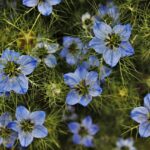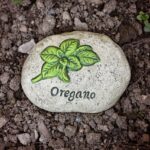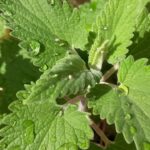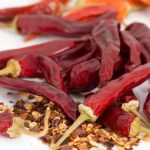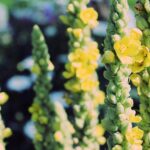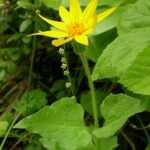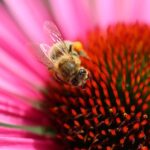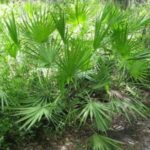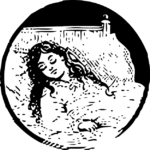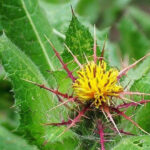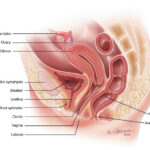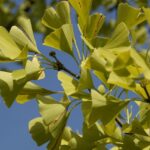I’m having a love affair with Turmeric. Turmeric isn’t new to me. I’ve known and worked with this plant for a long time. Yet, lately, I can’t seem to get enough. Its’ warm, rich taste is balanced and smooth, just what my body and mind need. I’m loving making curries, enjoying Turmeric tea, and my latest thing – Turmeric Latte. Yum, yum. (The recipe is below.)
Turmeric (Curcuma longa, C aromatica and some others)
Family: Zingiberaceae (Ginger family)
This post contains affiliate links. That means, if you purchase a product through one of the links, I make a commission at no additional cost to you. I appreciate it each time you click on or make a purchase from one of my links. Rest assured, only superior products are suggested. Ones that I truly feel confident about. Thank you for your support.
History and Description of Turmeric
The use of Turmeric dates to the Vedic Culture of the Indian subcontinent, somewhere between 4000 and 6000 years ago. It was and still is used in cooking, medicine, cosmetics and as a dye for textiles. The plant is so completely interwoven into the Indian culture that it has are 53 different Sanskrit names.
Native to India and Southern Asia, Turmeric slowly moved around the world and is now widely cultivated in the tropics. Common names vary by the country and culture in which the plant is grown. Because there are more than 130 species that have been identified worldwide, there are a lot of common names. Some of the more popular names include wild Turmeric, Yellow Root and Golden Root.
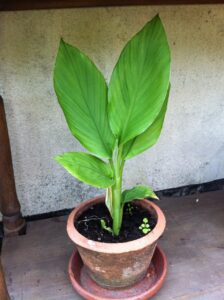
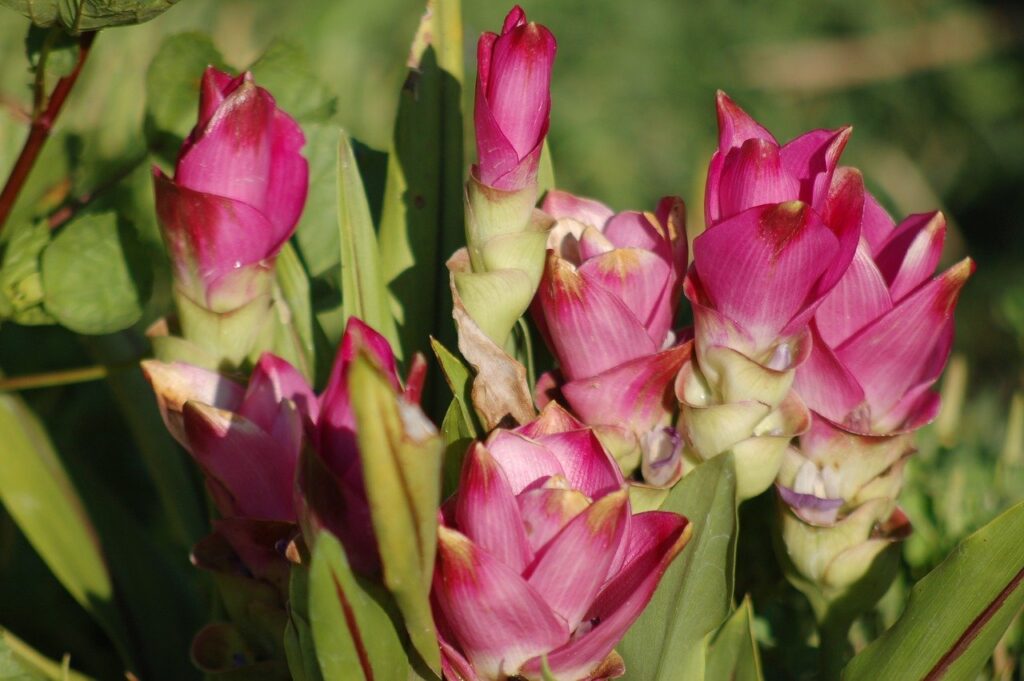
Curcuma belongs to the ginger family and is a herbaceous, perennial plant that grows about three feet tall with long oblong leaves. The flowers are funnel-shaped and range in color from white, yellow, or pink. They bloom between pale green, leafy bracts, or modified leaves of the plant. The flower structure is conical in shape and about 8 to 12 inches long.
Both the flowers and vegetative bracts are edible. Although I’ve personally never eaten the flowers, they are reported to have a taste similar to butter lettuce, with subtle hints of the root spice.
The root or the rhizome is the part most used in cooking and medicine.
The root, or rhizome, is tuberous. The skin is rough and segmented. Having a similar appearance to it is cousin ginger but with a deep yellow brown, to dark orange color. The roots are tapered and about one to three inches long and about 1 inch thick with smaller branching tubers.
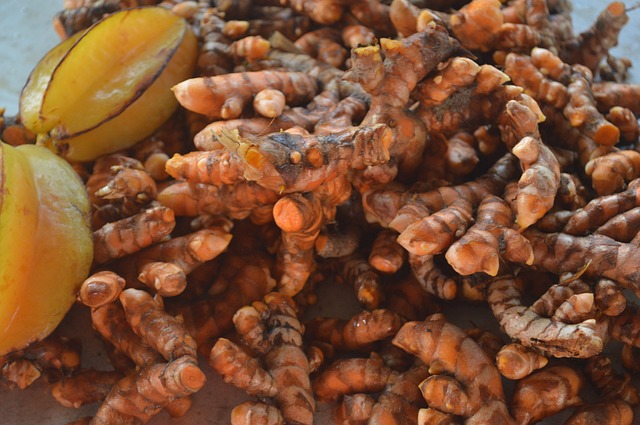
Primary Chemical Constituents
More than 100 chemical constituents have been isolated from Turmeric. Two primary, and well-known constituents are a volatile oil, containing turmerone and the curcuminoid curcumin. Both have potent anti-inflammatory, anti-oxidative and anti-platelet properties. The whole plant works as a whole (with all its constituents), which is probably why the whole plant has a stronger biochemical activity than isolated individual constituents. For a complete list along with an explanation of their actions visit the NCBI bookshelf and Herbal Medicine: Biomolecular and Clinical Aspects. 2nd edition, chapter 13.
Turmeric - Medicinal Properties and Actions
Medicinal properties include anti-inflammatory, antiviral, antifungal, antibacterial, antioxidant, anticancer or antineoplastic, lowers cholesterol, antimicrobial, stimulant, carminative, alterative, and vulnerary. It grounds the body and mind as it gently energizes and modulates the immune system.
Energetics:
Turmeric is bitter, astringent, heating and pungent.
- In Ayurvedic medicine the plant is used to balance the 3 doshas. However, it can increase pitta and vata in excess.
- In Traditional Chinese Medicine, Turmeric is used to promote blood circulation and dispel blood stagnation.
Medicinal Uses of Turmeric
According to Dr. Vasant Lad of the American Ayurvedic Institute, Turmeric is the best medicine in Ayurveda for the whole person because it has beneficial effects on all the tissues and elements in the body. Working on both subtle and gross anatomy, the herbs purifies the channels of the subtle body and helps relax and stretch ligaments in the physical body, qualities that make it useful to anyone practicing yoga and meditation. Turmeric energizes the immune system, promoting proper metabolism, remedying both excesses and deficiencies. Use of the essential oil and/or the herb brings a feeling of presence and grounding, relieving confusion and anxiety.
Turmeric as an Immune Modulator
Turmeric works to reduce biofilm viability. A biofilm is a kind of wall enclosing viruses, bacteria, and other unwelcome microorganisms. It is something like our skin, only around the infection or abnormal growth. Biofilms help the colony of invading cells fend of our body’s immune system. Using this herb weakens the biofilm, stimulates lymph drainage, and increases immune function working as a cellular protective. It has anti-microbial, anti-viral, anti-bacterial, and anti-fungal properties making it helpful with a variety of issues from cancer to MRSA and many forms of viral and bacterial infections. Also helping down regulate histamine response, decreasing allergies over time.
Turmeric is used to treat lung issues such as bronchitis, sore throat, tonsillitis, and laryngitis. In India it is used to treat conjunctivitis (an infection in the eye), smallpox, urinary tract infections, and menstrual pain.
Blood and Circulation
Turmeric cleanses blood and lymph tissue. Warming, it thins the blood, promoting circulation and dispelling blood stagnation, helping to lower, and control cholesterol levels and lipid levels or triglycerides. The root helps prevent and dissolve all sorts of growths and blood clots. To treat anemia, eat 4-6 oz of plain yogurt to which 1 tsp of turmeric has been added.
Pain and Inflammation
Turmeric is a powerful anti-inflammatory and antinociceptive agent. An antinociceptive works with the nervous system to block the detection of pain. In this regard, Turmeric is said to work better, with a longer lasting effect, with fewer side effects, than narcotics used for the same purpose.
For the relief of pain, the herb is best used when inflammation and subsequent pain is cause by what TCM calls cold damp. Cold, damp conditions can be seen by a thick coating (usually white and sticky) on the tongue, along with a buildup or thickening of internal fluids. Use it to relieve the pain of fibromyalgia, sciatica, brachial nerve pain, hepatitis, any lower digestive distress or disease, joint pain, RA, specific for MS and hepatitis. A fabulous herb.
Digestion
Turmeric has a well-rounded, beneficial effect on overall digestion. From mouth to anus and everywhere in between, this yellow root protects, strengthens, and heals the process of digestion along with associated tissues. Beginning with the upper digestive process, it improves the appetite and helps relieve dyspepsia or acid indigestion. An excellent addition to any treatment for anorexia.
Turmeric supports the function of the liver and gallbladder, where it stimulates the production of bile by the liver and its excretion by the gallbladder. Thus, Turmeric aids in the digestion of sugars, oils, and proteins. It helps lower cholesterol levels and prevents the thickening of bile that can cause a backup in bile ducts. Some traditional practitioners even use turmeric to dissolve gallstones. However, I was unable to find any specific information on its effectiveness when gallstones are present.
In the lower digestive area, Turmeric helps dispel worms, relieves colic, heals gut mucosa, and improves intestinal flora. Its use increases the absorption of nutrients by the colon. Further, its anti-inflammatory action is helpful to relieve abdominal distention, making it useful for problems caused by inflammatory bowel disease and menstrual cramping. As a bonus, it helps prevent and dissolve polyps in the colon and anal canal.
Diabetes and Blood sugar
Recent studies show that Turmeric has the potential to help Type 2 Diabetics and pre-diabetics maintain a healthy blood sugar level. The study showed that the use of this herb helped decrease blood sugar, sugar cravings, and cholesterol with long term use. It effects pancreatic and liver enzymes that convert dietary carbohydrates into glucose thereby working to stabilize blood sugar levels. Further, it helped slow macular degeneration or retinopathy and to stabilize capillary viability. Although there was no mention of peripheral neuropathy in the study, its use may help reduce nerve pain in the feet and hands. If it works to stabilize the capillaries and nerve structure of the eyes, it makes sense the same action is possible in other areas of the body. It’s worth a try.
Another study showed that pre-diabetics that took curcumin (an active constituent of turmeric) for 9 months, were less likely to develop diabetes than those that got the placebo.
To stabilize blood sugar, take 2 “00” caps 3 times per day, 5 minutes before meals.
Turmeric and Cancer
Used for cancer treatment and prevention, Turmeric is a cell protectant and an anti-cancer agent that inhibits abnormal cell growth and discourages mutation of DNA. It helps the body digest harmful chemical and biological agents, helping decrease cancer-causing effects of cigarette smoke, and many other harmful chemicals like Florine, bromine, alcohol, engine exhaust and more. Turmeric supports detoxification enzymes that help the liver eliminate toxins. All of this gives turmeric a limiting effect on the growth of lymphomas and several other types of cancers.
In terms of cancer treatment and radiation therapy, oral consumption of Turmeric has been shown to significantly protect bone marrow, reduce radiation-induced lung fibrosis, and protect against serum and liver lipid peroxidation. When taken prior to radiation and chemotherapy treatments, the herb has been shown to protect against cellular nerve damage possibly preventing chemotherapy-induced peripheral edema.
External Usage
Turmeric can be applied externally in the form of a paste, mixed with water to reduce the swelling of a traumatic injury. A tincture or tea may be applied to a wound, bite, blister, or other type of abrasion to prevent infection. Apply the powdered root, mixed with honey to reduce itching and relieve pain and inflammation due to sprains and bruises. Mix ½ teaspoon Turmeric with 1 teaspoon aloe to treat cuts wounds and fungal nail infections. For a tooth ache, mix the powder with a pinch of salt and a few drops of mustard oil. Apply powder directly to gums when inflamed or painful. The powder mixed with water can be applied to wounds, injuries, sores, inflamed muscles, and joints.
At Wonderment Gardens we make an infused oil with Turmeric, Poke Root and some other herbs to assist lymph drainage. We call it Boobie Butter Lymph Oil.
Preparation and Dosage Suggestions for Turmeric
Turmeric may be used as an infusion, decoction, milk decoction (my favorite), powder (250 mg – 1 g), and a paste made with the powder. It also makes a lovely infused or essential oil.
For active cancer therapy, use 2000 to 4000 mg/day (2000 mg= approx. 1.33 cup powder)
Turmeric is often available in capsules – usually between 150 to 250 mg.
Curcumin – the active constituent of Turmeric – is available in capsules at most health food stores. It is the form most frequently suggested by the medical industry.
Recipe Ideas
Turmeric Latte (From Momma Heidi)
Mix
- 2 tablespoons Turmeric Powder
- 1 Teaspoon Cinnamon Powder
- ½ teaspoon Ginger Powder
- ¼ teaspoon Black Pepper
- Optional – ¼ teaspoon each of Cardamom powder and/or Clove Powder
Mix well. Put 1 cup milk (any type you like) over medium heat. Add 1 or 2 teaspoons of the above mixture (to taste). Bring to a boil, whipping well. Remove from heat. Add a few drops of vanilla and honey to taste. Enjoy.
Turmeric Paste
Mix
- ¼ cup powdered Turmeric
- ½ water
- ½ teaspoon Black Pepper (more or less to taste)
- 1/8 cup oil of your choice. I like ghee, but olive oil, avocado oil or whatever good quality, cold pressed oil will work.
In a small saucepan combine Turmeric, water, and pepper to taste. Simmer over low to medium heat for about 5 minutes. The mixture will thicken; add more water as you like to prevent from sticking and to make the consistency you like. Remove from heat. Add oil or ghee and place in a jar for use in cooking or golden milk.
Turmeric Anti-inflammatory Honey
Mix
- 4-parts Turmeric powder
- 1-part powder Rose petals
- ½-part Black Pepper
- Honey
Mix herbs. Place herbs into a small saucepan. Add about ½ amount of honey by volume. Heat slowly to mix honey with herbs adding more honey as needed to completely cover herbs. Remove from heat. Bottle and refrigerate.
Suggested dose – take 1 or 2 teaspoons as needed 3 to 4 times per day for pain. Can be added to hot teas or food as you like.
Precautions and Contra-Indications
- Pregnant and breastfeeding women should take Turmeric only in food and spice quantities and should avoid taking medicinal does.
- Turmeric and curcumin thin the consistency of blood and may interfere with its ability to clot. Medicinal doses should be avoided by those preparing for surgery, taking blood thinning medications, or are in any situation where blood thinning could cause problems.
- Because Turmeric effects blood sugar levels, it could interfere with diabetic medication.
Caution should always be taken whenever adding a new herb to your regime. Take the time to listen to yourself. If something feels “off”, it probably is. If you are taking medication, consult with your doctor or a qualified holistic practitioner before beginning something new.
References
https://www.ncbi.nlm.nih.gov/books/NBK92752/
https://www.ncbi.nlm.nih.gov/pmc/articles/PMC3476912/
https://www.ncbi.nlm.nih.gov/pmc/articles/PMC3857752/
https://www.rxlist.com/turmeric/supplements.htm
Yance, Donald R, C.N,, M.H, A.H.G, with Arlene Valentine; Herbal Medicine, Healing and Cancer. McGraw Hill Publishing, 1999
Vasant, Lad, B.A.M.S., M.A.Sc.; The Complete Book of Ayurvedic Home Remedies, Three Rivers Press, Ny, Ny, 1998
Winston, David, AGH., ANALGESIA; THE SEARCH FOR EFFECTIVE PAIN RELIEF BOTANICAL AND NUTRITIONAL PROTOCOLS ©2018.
Frawley, David Dr. and Lad, Vasant Dr.; The Yoga of Herbs, Lotus Press, Twin Lakes Wi, 2001
Disclaimer
The statements and ideas presented here are not intended to diagnose, treat, cure, or prevent any disease or condition. They have not been evaluated by the FDA. All ideas presented are for the sole purpose of education. To help you take control of your own health. If you have a health concern or condition, consult a physician. We suggest that you always consult a medical doctor before modifying your diet, using any new product, drug, supplement, or doing any new exercises.
These statements and products have not been evaluated by the FDA. They are not intended to diagnose, treat, cure, or prevent any disease or condition. If you have a health concern or condition, consult a physician. Always consult a medical doctor before modifying your diet, using any new product, drug, supplement, or doing any new exercises.
Herbs taken for health purposes should be treated with the same care as medicine. Herbal remedies are no substitute for a healthy diet and lifestyle. If you are serious about good health, you’ll want to combine diet, exercise, herbals, a good relationship with your doctor and a generally healthy lifestyle. No one of these will do it alone.
This information is designed to be used as part of a complete health plan. No products are intended to replace your doctor’s care, or to supersede any of his/her advice or prescriptions.
.

